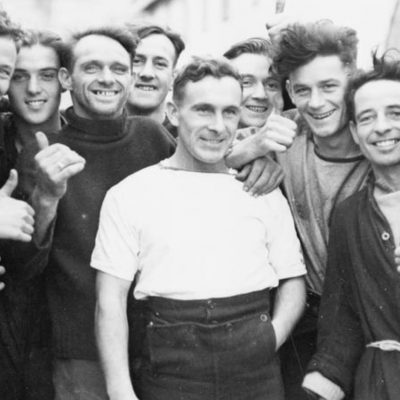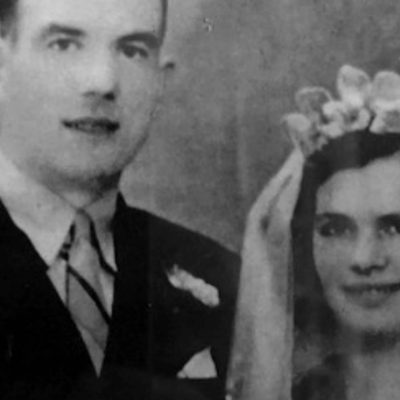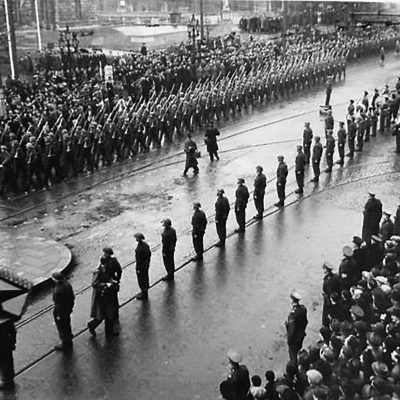Activation of 63rd Signal Battalion took place at Camp Claiborne, Louisiana on 1st June 1941. Within 2 months, the unit strength was 24 officers and 456 enlisted soldiers. They trained in Louisiana and South Carolina before receiving notice in December 1942 that they were ready to go overseas.
On 15th January 1942, 63rd Signal Battalion left New York, New York on USAT Chateau Thierry along with elements of 34th Infantry Division. Along with other units of the United States Army, they arrived at Belfast, Co. Antrim on 26th January 1942.
Commanding Officer Lieutenant Lloyd A Keisler recalled there not being enough room on the troopship. He had to march one unit of his soldiers back off the ship for them to follow at a later date.
On arrival in Northern Ireland, 63rd Signal Battalion trained and operated communications for V Corps. They were one of the units inspected by American Ambassador Mr. John G Winant during his visit to Northern Ireland on 18th February 1942.
By 10th August 1942, the unit strength was 33 officers and 898 enlisted soldiers. The battalion consisted of a Headquarters, A, B, and C company by the end of its time in Ulster. On 26th September 1942, the battalion departed for Shrivenham, Oxfordshire. From there, they would leave to take part in Operation Torch – the invasion of North Africa.
Bases in Northern Ireland
| Start Date | End Date | Unit | Location |
|---|---|---|---|
| 26th January 1942 | 63rd Signal Battalion | Sunnylands Camp, Carrickfergus, Co. Antrim | |
| 26th January 1942 | 30th October 1942 | 63rd Signal Battalion (V Corps) | Lurgan, Co. Armagh |


